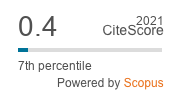Many-fold less than the field recommended concentrations of neonicotinoids and malathion affect foraging of honeybee in three important crops in India
DOI:
https://doi.org/10.33307/entomon.v41i1.122Keywords:
Neonicotinoids, imidacloprid, thiamethoxam, malathion, honeybee, Apis floreaAbstract
Although insecticides effectively control the insect pests in different agro-ecosystems, they also reportedly affect the non-target insects including bee pollinators at the sub-lethal concentrations. A series of field experiments were conducted to evaluate the effects of two neonicotinoids and one organophosphate insecticide on the foraging activity of honeybee in three test crops at the sub-lethal concentration during flowering. The mean number of the dwarf honeybee (DHB), Apis florea (F.) (Hymenoptera: Apidae) recorded during the pre-spraying did not differ between treatments on each of the three crops. However, it differed significantly during the post-spraying except for malathion on inflorescences of the pearl millet. The DHB foraging time remained generally
constant during the pre-spraying and varied greatly during the post-spraying on the three test crops and both groups of insecticides. The neonicotinoids and malathion significantly reduced visits of the DHB on the inflorescences of the test crops, their foraging activities and time spent on the inflorescences at the concentration many-fold (5-50 fold) less than the field recommended concentration of the insecticide.
Downloads
Published
How to Cite
Issue
Section
License
Copyright (c) 2016 ENTOMON

This work is licensed under a Creative Commons Attribution-ShareAlike 4.0 International License.


